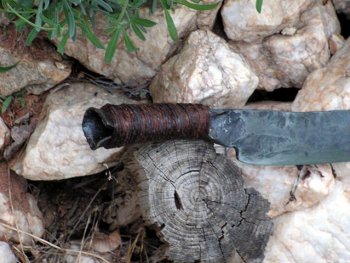The greatest tool ever made is the human hand. It adapts to even the crudest of tools. I have picked up and used "balanced" and unbalanced tools in just about every environment you can think of and I can tell you that I did not care where the "balance point" was on any of the tools I have used. I see a tool, pick it up and use it. It's never about the tool and always about the hand that holds it. In spite of "studies show", I don't think much of "balance point" theory.
Bush Monkey,
I didn't say anything about "Studies Show"
I mostly make Chef knives .
The greatest tool ever made is our Brain.
It give's us the ability to make tools that fit and balance to our hands. And are suited for a particular job.
When a professional Chef picks up a knife, They usually are interested in the balance point in their hand.
You seem to make hard use war hacker, out in the boonies type blades.
Those are a different genre than a Chef knife that must be used 5-8 sometimes 12 hours or more at a time if you own a restaurant. There long term weight and balance mean alot when you must get perfect cuts of meat and veggies again & again.
Your own quote at the end of your post Talks about the last part being,
When there is nothing left to take away! ??
I am not saying mine are more or better than yours!
Just that each genre of knives are made to fit different needs. You say that there's no need for lighten handles in yours. OK.
There is in mine and others. Total perfection in a Culinary knife is what I seek!
Am I there? of course not, But that won't keep me from my pursuit of designing and making Culinary knives that are the perfect weight, Size, And balance point, etc, for my customers!
Cheers.
Laurence
www.rhinoknives.com/


